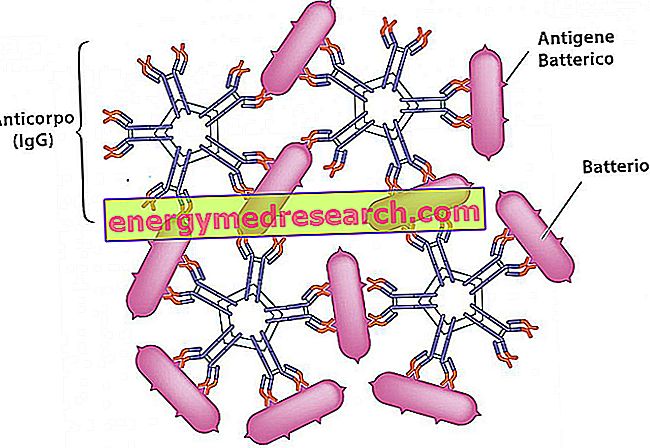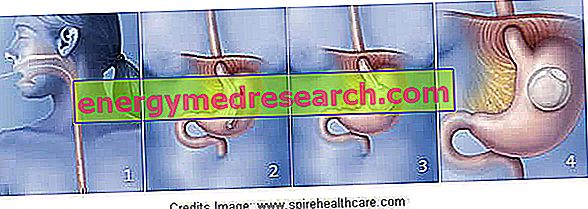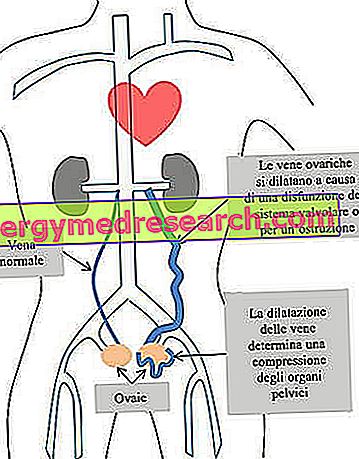Generality

Metanephrines derive from the metabolism of catecholamines, hormones produced and secreted by the adrenal medullary in order to prepare the body to deal with stressful events.
What are
Catecholamines are hormones produced in the central nervous system and adrenal medulla that help regulate blood flow and pressure in the body and play an important role in responding to physical or emotional stress.
After carrying out their activity, the catecholamines are metabolized into inactive compounds; both (hormones and their metabolites) are then excreted in the urine.
Metanephines and normetanephrine are inactive metabolites of epinephrine (adrenaline) and norepinephrine (noradrenaline).
Pheochromocytoma
Pheochromicitoma is a generally benign tumor that affects the adrenal glands, causing catecholamine hypersecretion; consequently, the plasma and urinary levels of adrenaline and noradrenaline increase, but also of the respective metabolites, called metanephrines.

Thus, simplifying, the detection of normal metanephrine and normetanephrine values leads to the exclusion of the presence of a secreting pheochromocytoma or paraganglioma, which is not automatic in the presence of normal adrenaline and noradrenaline values.
Why do you measure
The dosage of urinary metanephrines is mainly used as an aid in the diagnosis of pheochromocytoma, or as a monitoring of the efficacy of the therapy, after the tumor has been removed.
Examination is also required when paragangliomas are suspected (rare extra-adrenal tumors).
These neoplastic forms can produce a large amount of catecholamines, with a significant increase in the concentrations of metanephrines and normetanephrines.
Complementary Exams
However, the amount of urinary metanephrines cannot provide information on the size or number of tumors; for example, a small-sized pheochromocytoma can cause a consistent adrenergic hypersecretion.
All this information will then be collected through complementary investigations, such as CT, abdominal magnetic resonance imaging, PET with 6- (18F) fluorodopamine, or scintigraphy with meta-iodobenzylguanidine (MIBG) or with labeled analogues of somatostatin (octreoscan).
Importance of a differentiated dosage
When possible, the differential measurement of metanephrines (metanephrine and normetanephrine) is recommended, because sometimes the tumor secretes only one type of catecholamine (adrenaline or noradrenaline); therefore, especially in the case of poor secretion, the non-differentiated measurement could give a false negative result. Furthermore, the eventual detection of an increased secretion of metanephrine or adrenaline immediately directs the localization investigation towards the adrenal gland, the exclusive site of epinephrine synthesis (norepinephrine can also be secreted by some nerve endings, therefore by extra-adrenal pheochromocytomas or paragangliomas).
When you run the exam
All patients suffering from poorly controlled hypertension, with persistent symptoms or sudden accesses testifying to adrenergic hypersecretion (headaches, headaches, anxiety, anxiety, palpitations and heartbeat more energetic cardiac).
Since the secretion of catecholamines tends to fluctuate within 24 hours, the examination is carried out starting from a urine sample collected within 24 hours ; in this case it also allows to identify any cases of hypersecretion escaped from the plasma dosage.
Normal values
Normally, both catecholamines and their metabolites are present in small amounts in the blood and urine.
- Urinary metanephrines - Normal values within 24 hours : 0 - 320 µg.
Note : the reference interval of the exam can change according to age, sex and instrumentation used in the analysis laboratory. For this reason, it is preferable to consult the ranges listed directly on the report. It should also be remembered that the results of the analyzes must be evaluated as a whole by the general practitioner, who knows the patient's medical history.
High urinary metanephrine - Causes
Plasma levels of mildly increased metanephrine may be the consequence of chronic sympathetic activation, such as that which results from chronic diseases (such as heart failure).
Also the abuse of nicotine, caffeine, alcohol and certain types of drugs (amphetamines, cocaine or ephedrine), as well as stress or anxiety in view of the exam, can increase the levels of catecholamines and metanephrines in the blood.
To resolve any doubts, a suppression test can be performed with clonidine (300 mg orally), a drug capable of inhibiting the release of catecholamines by the sympathetic system; consequently, the failure to decrease catecholamine and metanephrine levels confirms the tumor (pheochromocytoma or paraganglioma).
Low urinary metanephrines - Causes
Low levels of metanephrines are not usually associated with medical problems and / or pathological consequences, therefore they are not considered clinically relevant.
How to measure it
For the examination of metanephrines it is necessary to start collecting urine in the morning, after having emptied the bladder at the usual time (for example at 7:00 am); from that moment on, all subsequent urine must be collected throughout the day up to and including 7:00 am the following day.
Preparation
The collection of the 24-hour urine sample involves the acidification of the urine themselves. Acidification is carried out by pouring about 5 ml of HCl 5 M (available in the analysis laboratory) for each liter of urine in the container before starting collection.
Before the metanephrine dosage, the use of antidepressants and psychoactive substances should be suspended for two weeks, as prescribed by the doctor.
Interpretation of Results
If urinary metanephrine concentrations are normal, the patient is unlikely to have pheochromocytoma.
If the value is moderately high, the doctor can re-evaluate the therapies, the diet and the level of stress to understand if there are factors that can influence the result. Subsequently, the test can be repeated to check if the result is still high.
A high concentration of urinary metanephrines in a patient who has had a pheochromocytoma or a paraganglioma may depend on a recurrence of the disease.



